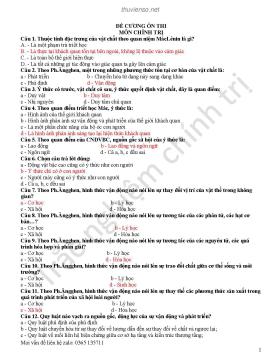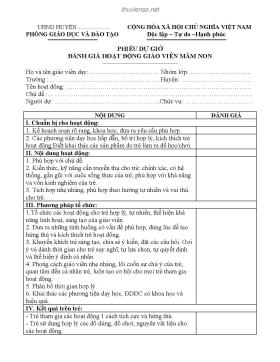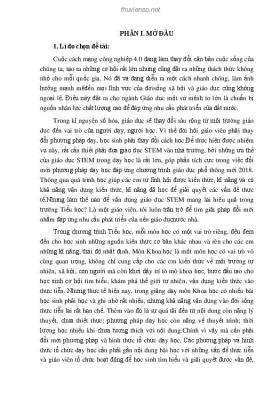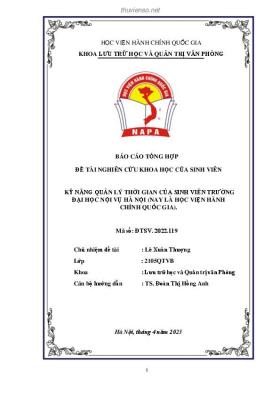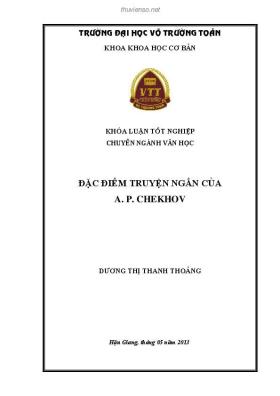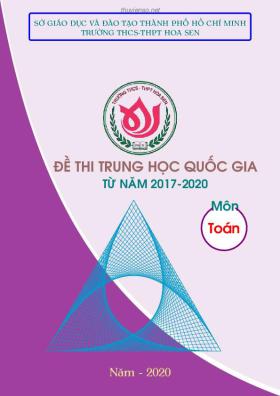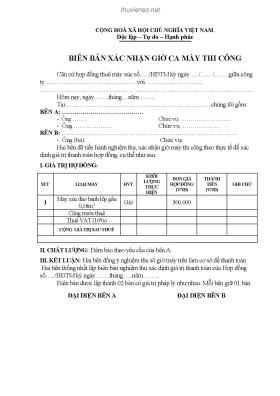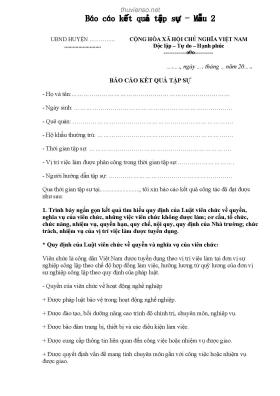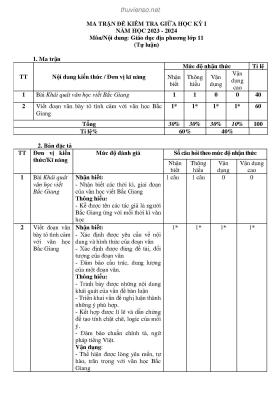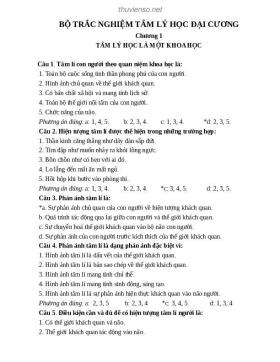
Chapter 020. Hypothermia and Frostbite (Part 3)
Số trang: 5
Loại file: pdf
Dung lượng: 14.01 KB
Lượt xem: 19
Lượt tải: 0
Xem trước 2 trang đầu tiên của tài liệu này:
Thông tin tài liệu:
Source: Modified from RR Kempainen, DD Brunette: Resp. Care 49:192, 2004.Physical examination findings can also be altered by hypothermia. For instance, the assumption that areflexia is solely attributable to hypothermia can obscure and delay the diagnosis of a spinal cord lesion. Patients with hypothermia may be confused or combative; these symptoms abate more rapidly with rewarming than with the use of restraints. A classic example of maladaptive behavior in patients with hypothermia is paradoxical undressing, which involves the inappropriate removal of clothing in response to a cold stress. The coldinduced ileus and abdominal rectus spasm can mimic, or mask,...
Nội dung trích xuất từ tài liệu:
Chapter 020. Hypothermia and Frostbite (Part 3) Chapter 020. Hypothermia and Frostbite (Part 3) Source: Modified from RR Kempainen, DD Brunette: Resp. Care 49:192,2004.Physical examination findings can also be altered by hypothermia. Forinstance, the assumption that areflexia is solely attributable to hypothermia canobscure and delay the diagnosis of a spinal cord lesion. Patients with hypothermiamay be confused or combative; these symptoms abate more rapidly withrewarming than with the use of restraints. A classic example of maladaptivebehavior in patients with hypothermia is paradoxical undressing, which involvesthe inappropriate removal of clothing in response to a cold stress. The cold-induced ileus and abdominal rectus spasm can mimic, or mask, the presentation ofan acute abdomen (Chap. 14). When a patient in hypothermic cardiac arrest is first discovered,cardiopulmonary resuscitation is indicated, unless (1) a do-not-resuscitate status isverified, (2) obviously lethal injuries are identified, or (3) the depression of afrozen chest wall is not possible. As the resuscitation proceeds, the prognosis isgrave if there is evidence of widespread cell lysis, as reflected by potassium levels> 10 mmol/L (10 meq/L). Other findings that may preclude continuingresuscitation include a core temperature < 10–12°C, a pH < 6.5, or evidence ofintravascular thrombosis with a fibrinogen value < 0.5 g/L (defibrillation attempts. Supplemental oxygenation is always warranted, sincetissue oxygenation is adversely affected by the leftward shift of theoxyhemoglobin dissociation curve. Pulse oximetry may be unreliable in patientswith vasoconstriction. If protective airway reflexes are absent, gentle endotrachealintubation should be performed. Adequate pre-oxygenation will preventventricular arrhythmias. Although cardiac pacing for hypothermicbradydysrhythmias is rarely indicated, the transthoracic technique is preferable. Insertion of a gastric tube prevents dilatation secondary to decreased bowelmotility. Indwelling bladder catheters facilitate monitoring of cold-induceddiuresis. Dehydration is commonly encountered with chronic hypothermia, andmost patients benefit from a bolus of crystalloid. Normal saline is preferable tolactated Ringers solution, as the liver in hypothermic patients inefficientlymetabolizes lactate. The placement of a pulmonary artery catheter risksperforation of the less compliant pulmonary artery. Insertion of a central venouscatheter into the cold right atrium should be avoided, since this can precipitatearrhythmias. Arterial blood gases should not be corrected for temperature (Chap. 48). Anuncorrected pH of 7.42 and a PCO2 of 40 mmHg reflects appropriate alveolarventilation and acid-base balance at any core temperature. Acid-base imbalancesshould be corrected gradually, since the bicarbonate buffering system isinefficient. A common error is overzealous hyperventilation in the setting ofdepressed CO2 production. When the PCO2 decreases 10 mmHg at 28°C, it doublesthe pH increase of 0.08 that occurs at 37°C. The severity of anemia may be underestimated because the hematocritincreases 2% for each 1°C drop in temperature. White blood cell sequestration andbone marrow suppression are common, potentially masking an infection. Although hypokalemia is more common in chronic hypothermia,hyperkalemia also occurs; the expected electrocardiographic changes can beobscured by hypothermia. Patients with renal insufficiency, metabolic acidoses, orrhabdomyolysis are at greatest risk for electrolyte disturbances. Coagulopathies are common because cold inhibits the enzymatic reactionsrequired for activation of the intrinsic cascade. In addition, thromboxane B 2production by platelets is temperature-dependent, and platelet function isimpaired. The administration of platelets and fresh frozen plasma is, therefore, noteffective. The prothrombin or partial thromboplastin times or INR (internationalnormalized ratio) reported by the laboratory appear deceptively normal andcontrast with the observed in vivo coagulopathy. This contradiction occursbecause all coagulation tests are routinely performed at 37°C, and the enzymes arethus rewarmed.
Nội dung trích xuất từ tài liệu:
Chapter 020. Hypothermia and Frostbite (Part 3) Chapter 020. Hypothermia and Frostbite (Part 3) Source: Modified from RR Kempainen, DD Brunette: Resp. Care 49:192,2004.Physical examination findings can also be altered by hypothermia. Forinstance, the assumption that areflexia is solely attributable to hypothermia canobscure and delay the diagnosis of a spinal cord lesion. Patients with hypothermiamay be confused or combative; these symptoms abate more rapidly withrewarming than with the use of restraints. A classic example of maladaptivebehavior in patients with hypothermia is paradoxical undressing, which involvesthe inappropriate removal of clothing in response to a cold stress. The cold-induced ileus and abdominal rectus spasm can mimic, or mask, the presentation ofan acute abdomen (Chap. 14). When a patient in hypothermic cardiac arrest is first discovered,cardiopulmonary resuscitation is indicated, unless (1) a do-not-resuscitate status isverified, (2) obviously lethal injuries are identified, or (3) the depression of afrozen chest wall is not possible. As the resuscitation proceeds, the prognosis isgrave if there is evidence of widespread cell lysis, as reflected by potassium levels> 10 mmol/L (10 meq/L). Other findings that may preclude continuingresuscitation include a core temperature < 10–12°C, a pH < 6.5, or evidence ofintravascular thrombosis with a fibrinogen value < 0.5 g/L (defibrillation attempts. Supplemental oxygenation is always warranted, sincetissue oxygenation is adversely affected by the leftward shift of theoxyhemoglobin dissociation curve. Pulse oximetry may be unreliable in patientswith vasoconstriction. If protective airway reflexes are absent, gentle endotrachealintubation should be performed. Adequate pre-oxygenation will preventventricular arrhythmias. Although cardiac pacing for hypothermicbradydysrhythmias is rarely indicated, the transthoracic technique is preferable. Insertion of a gastric tube prevents dilatation secondary to decreased bowelmotility. Indwelling bladder catheters facilitate monitoring of cold-induceddiuresis. Dehydration is commonly encountered with chronic hypothermia, andmost patients benefit from a bolus of crystalloid. Normal saline is preferable tolactated Ringers solution, as the liver in hypothermic patients inefficientlymetabolizes lactate. The placement of a pulmonary artery catheter risksperforation of the less compliant pulmonary artery. Insertion of a central venouscatheter into the cold right atrium should be avoided, since this can precipitatearrhythmias. Arterial blood gases should not be corrected for temperature (Chap. 48). Anuncorrected pH of 7.42 and a PCO2 of 40 mmHg reflects appropriate alveolarventilation and acid-base balance at any core temperature. Acid-base imbalancesshould be corrected gradually, since the bicarbonate buffering system isinefficient. A common error is overzealous hyperventilation in the setting ofdepressed CO2 production. When the PCO2 decreases 10 mmHg at 28°C, it doublesthe pH increase of 0.08 that occurs at 37°C. The severity of anemia may be underestimated because the hematocritincreases 2% for each 1°C drop in temperature. White blood cell sequestration andbone marrow suppression are common, potentially masking an infection. Although hypokalemia is more common in chronic hypothermia,hyperkalemia also occurs; the expected electrocardiographic changes can beobscured by hypothermia. Patients with renal insufficiency, metabolic acidoses, orrhabdomyolysis are at greatest risk for electrolyte disturbances. Coagulopathies are common because cold inhibits the enzymatic reactionsrequired for activation of the intrinsic cascade. In addition, thromboxane B 2production by platelets is temperature-dependent, and platelet function isimpaired. The administration of platelets and fresh frozen plasma is, therefore, noteffective. The prothrombin or partial thromboplastin times or INR (internationalnormalized ratio) reported by the laboratory appear deceptively normal andcontrast with the observed in vivo coagulopathy. This contradiction occursbecause all coagulation tests are routinely performed at 37°C, and the enzymes arethus rewarmed.
Tìm kiếm theo từ khóa liên quan:
Hypothermia and Frostbite bệnh học và điều trị bài giảng bệnh học tài liệu học ngành y Harrison's Internal MedicineTài liệu có liên quan:
-
9 trang 84 0 0
-
Bài giảng Bệnh học và điều trị nhi khoa y học cổ truyền
58 trang 84 0 0 -
Giáo trình sức khỏe môi trường_Bài 1
26 trang 51 0 0 -
Chapter 029. Disorders of the Eye (Part 8)
5 trang 47 0 0 -
Bài giảng Y học thể dục thể thao (Phần 1)
41 trang 45 0 0 -
Giáo trình Sức khỏe nghề nghiệp_Phần 1
21 trang 42 0 0 -
21 trang 39 0 0
-
Chapter 075. Evaluation and Management of Obesity (Part 5)
5 trang 39 0 0 -
Một số hình ảnh siêu âm của bệnh lý túi mật (Kỳ 1)
5 trang 38 0 0 -
5 trang 36 0 0
-
Tiểu đường liên quan liệt dương thế nào ?
4 trang 35 0 0 -
Giải phẫu xương đầu mặt (Kỳ 5)
5 trang 35 0 0 -
Chapter 045. Azotemia and Urinary Abnormalities (Part 7)
5 trang 34 0 0 -
Chapter 089. Pancreatic Cancer (Part 2)
6 trang 34 0 0 -
TRẮC NGHIỆM MÔI TRƯỜNG VÀ SỨC KHOẺ CON NGƯỜI
7 trang 33 0 0 -
Giáo trình Sức khỏe nghề nghiệp_Phần 7
17 trang 33 0 0 -
Gút và tăng uric trong máu (Kỳ 1)
5 trang 33 0 0 -
5 trang 32 0 0
-
Giải phẫu đại cương nhập môn giải phẫu học (Kỳ 2)
6 trang 32 0 0 -
Dinh dưỡng và thực phẩm (Phần 2)
8 trang 32 0 0


